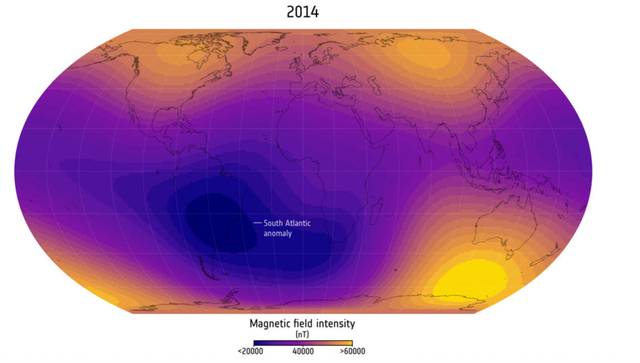Exploring the South Atlantic Anomaly: Significance and Impact

Introduction
The South Atlantic Anomaly (SAA) is a region of the Earth’s magnetic field where the magnetosphere is significantly weakened. Spanning parts of South America and the southern Atlantic Ocean, the anomaly is critical for understanding both terrestrial and space-based systems due to its impact on satellites and other space missions.
What is the South Atlantic Anomaly?
The SAA is an area of low magnetic field strength, resulting from the offset of Earth’s magnetic dipole and the presence of geological features such as the South American Plate. Scientists first identified the anomaly in the late 20th century, and it has been growing in size and intensity in recent years. The weakened magnetic field in the SAA allows increased levels of radiation to penetrate, posing risks to satellites and spacecraft that pass through this region.
Impact on Space Missions
Satellites operating within the SAA are vulnerable to various issues, including electronic malfunctions and data corruption. Notably, NASA’s Hubble Space Telescope, the European Space Agency’s SENTINEL satellites, and several other missions have reported anomalies when traversing this area. Engineers and mission planners take these risks into account, often adjusting the orbits of satellites or implementing protective measures to safeguard sensitive equipment against radiation exposure.
Research and Observations
Continuous research is being conducted to monitor changes in the SAA. Scientists are employing various methods, including satellite data analyses and ground-based observations, to study its behaviour and implications. Notably, some researchers are examining whether the anomaly is a symptom of more significant changes in Earth’s magnetic field, which could foreshadow a geomagnetic reversal where the magnetic north and south poles swap places.
Conclusion
The South Atlantic Anomaly poses ongoing challenges and opportunities for both scientists and space agencies. Understanding this region is vital not only for protecting satellites but also for decoding the complexities of the Earth’s magnetic field. As research continues, the significance of the SAA will likely expand, informing our understanding of geophysical phenomena and enhancing the safety of future space missions. Given its trend of growth, the SAA remains a point of interest for space exploration, contributing to our broader understanding of planetary science.


